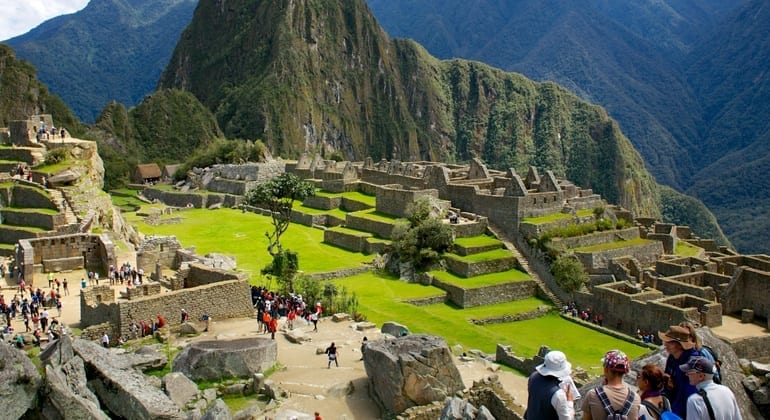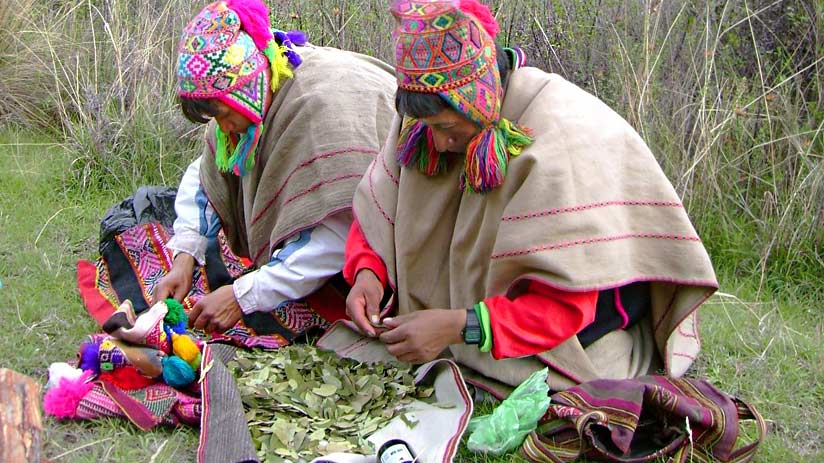5 Things to Know Before Going to Machu Picchu
James Bustamante is Native to New York but born to Peruvian parents. He has been traveling throughout Latin America since early 2003 and finally made his home in Peru. James has made his way by eating and traveling through almost every country in Central and South America.
Last Updated on March 31, 2021 by James Bustamante
Before going to Machu Picchu you should know that Peru is an amazing place where you can easily spend 20-30 days traveling around the country and still see something new every single day. Cusco and Machu Picchu though are by far the more popular destinations for travelers and they always have many questions before planning their trip.
We often receive questions like “what should we know before going to Machu Picchu?” So, below we have 5 things to know before going to Machu Picchu, in no particular order.
1. How to Go to Machu Picchu ?

The first thing we will want to know about going to Machu Picchu is how to actually reach the Inca citadel. We have 2 basic options, you can either take one of the hikes to Machu Picchu or we can take the train to Aguas Calientes and then go to Machu Picchu
Going to Machu Picchu By Trek
There are many treks that lead to Machu Picchu but there are 3 that stand out the most. Each one offers a chance to hike the Andes and includes a Machu Picchu tour on the last day.
The Classic 4 Day Inca Trail to Machu Picchu
- This 4-day camping trip is the most popular trek to the citadel.
- The difficulty for this particular hike can be described as moderate.
- Reservations for your permits must be made at least 6 months in advance to ensure availability.
- The Inca trail has a price of $760/person.
- This particular trek is closed for maintenance every February.
- Includes Machu Picchu guided tour with permits.
- The best time to do the Inca trail is from late April – August.
The 5 Day Salkantay Trek
- The Salkantay is customizable and can be either a 5 day or a 4-day trek.
- This hike focuses on the Andean landscape and not so much on Inca ruins.
- The difficulty for this particular hike is moderate to slightly above moderate.
- Reservations for this trek must be made at least 30 days prior to travel.
- The Salkantay Trek has a price of $720/person.
- Includes Machu Picchu guided tour with permits.
- The trek is available all year, even in February however it is not advisable due to rain.
- The best time to do the Salkantay trek is between late April and August.
The 2 Day Inca Trail to Machu Picchu
- The 2 Day trail can be described as an easy to moderate day hike.
- The best day hike option for travelers with limited time.
- Reservations must be made at least 30 days in advance to ensure availability.
- The express 2-day trek has a cost of $595/person.
- There is no camping since you will arrive at Aguas Calientes where you will spend the night in a hotel.
- Includes Machu Picchu guided tour with permits.
Going to Machu Picchu by Train
The easiest and fastest way to reach Machu Picchu is to go by train. We head to the train station in either Cusco (Poroy) or to the station in Ollantaytambo first. The time we leave will depend on your customized itinerary but we generally prefer to take the mid-morning train from Ollantaytambo to Aguas Calientes.
Once we board the train we will head down the Urubamba valley until we reach the cloud forest where the archaeological site is located. The train ride will take around two hours in total until we get to the town of Aguas Calientes. Before going to the Inca sanctuary you can either spend the night in this small town and explore, the following morning we take the shuttle to Inca ruins.
Alternatively, we can arrive at Aguas Calientes and head to the shuttle station and wait for our ride up the mountain. Take the shuttle up the road and arrive at the Inca city in less than 25 minutes.
There are two train companies that head towards the ancient ruins of the Inca: Incarail and PeruRail.
2. Machu Picchu Attracts Travelers From Around The Globe

Machu Picchu is quite literally bustling with hundreds of visitors from all around the world. It’s likely that you’ll meet people from Germany, Japan, Australia, Poland, even from some nearby countries such as Chile and Argentina.
From the businessman looking to finally spend quality time with his family to backpackers traveling throughout South America, usually finishing the last leg of their journey in the Inca city of Machu Picchu.
You will see many people in native/customary clothing walking around Cusco, both men and women in traditional Andean garb. This is when tipping becomes important as many of these people make their living by taking pictures with tourists visiting the Imperial City.
For the small cost of around 5 soles (little more than a dollar or so), you will be able to take some of the classic pictures you see all over Instagram and Facebook. a good suggestion is to take an extra 10 to 15 soles (3-5 dollars) in change so that you don’t miss out on any photo ops with the locals and even some llamas as well. Normally I wouldn’t recommend this as it seems disingenuous, but many of these locals make their entire living of taking pictures with tourists.
3. You will See Local Customs in Real-Time

The first and most shocking example of local customs that travelers see in Cusco and Machu Picchu are the coca leaves being sold almost in every corner.
Coca leaves can be your best friend when you first arrive in Cusco. Most experience a bit of jet lag as well as some degree of elevation sickness at the beginning of the trip.
While some decide to go the pharmaceutical route and take some pills, there is always the possibility of going with the more natural method. Dry Coca leaves are used to make an infusion known as “Mate de Coca” which has many benefits that will help calm an upset stomach as well as ease your lightheadedness during those first very important hours.
You can find Coca leaves everywhere around Cusco and in Aguas Calientes before heading to out to the ruins. They are quite cheap, oftentimes around 3 or 5 soles (less than a dollar US) for a large bag full of them. Coca leaves have been used for a very long time by the locals and the Inca used them as well. These were used for a myriad of things including instant energy (they were chewed) and elevation sickness.
4. What to Pack Before Going to Machu Picchu
Knowing what to pack before going to heading out is another important point. The list below covers what to take to the actual Machu Picchu tour itself and not the full trip or what to take on a multi-day hike like the Inca trail. So for a brief list of what items are important on the day you visit the Inca site please check below:
- Your Passport (of course)
- Machu Picchu ticket (Huayna Picchu ticket if you are also taking that hike).
- Money to cover items such as the Machu Picchu passport stamp or if you need to go to the bathroom.
- Your Camera or a good Camera phone.
- A bottle of water and a bag of something to snack on.
- Sunscreen and of course insect repellent.
- A hat or a cap to protect you from the intense sun.
- A rain poncho if you travel in the rainy season.
5. It’s Called Aguas Calientes or Machu Picchu Town
Once you reach Aguas Calientes, the town at the foot of Machu Picchu, you will notice that this Anean village has many restaurants, shops, and hotels. All of these establishments nestled within the town are here for one sole purpose, to accommodate the tourists.
Aguas Calientes was actually created to be a hub for tourists that want to visit Machu Picchu. Traditionally there were natives living in this area just like the Inca before they did, however, it was not a formal town and there was no commerce like we see now.
You will also notice that street vendors are plentiful and eager to make a sale, so don’t be afraid and prepare yourself to be approached as you walk throughout the town. You’ll see all manner of knick-knacks and souvenirs at a large range of prices, but most things will be at around 10 -30 soles (around 3 to 10 dollars).
This is the perfect place to practice your haggling skills. The prices from the street vendors are not set in stone so make sure to talk them down a few soles in case you need to buy anything.
Conclusion
Before going to Machu Picchu make sure to ask your travel adviser any questions you might have. Such as the weather or if there is any other place you would like to visit during your trip to Peru.
Frequently Asked Questions
Can I buy food in Machu Picchu?
No, there are no food stands or restaurants within the Machu Picchu Sanctuary. Just outside the gates, you will be able to find a restaurant and a food stand in case you are hungry or thirsty.
Can I buy my Machu Picchu tickets the same day I visit Machu Picchu?
Technically it is possible however we don’t recommend it because there might not be any tickets available by that time. We recommend getting your tickets weeks in advance or just let us take care of it


